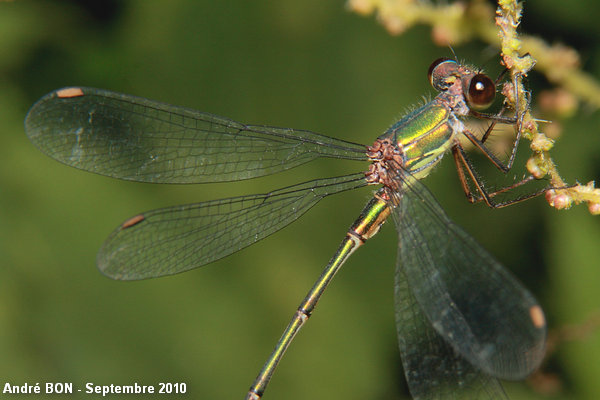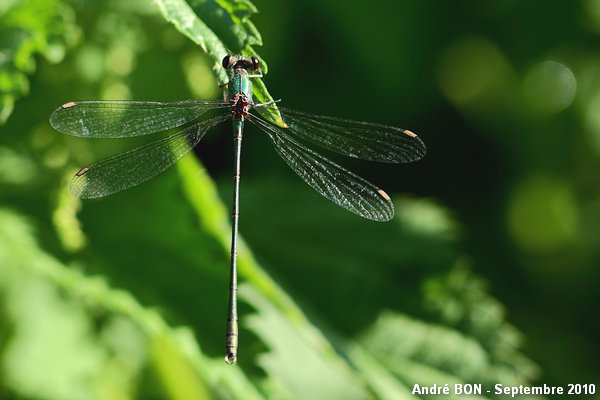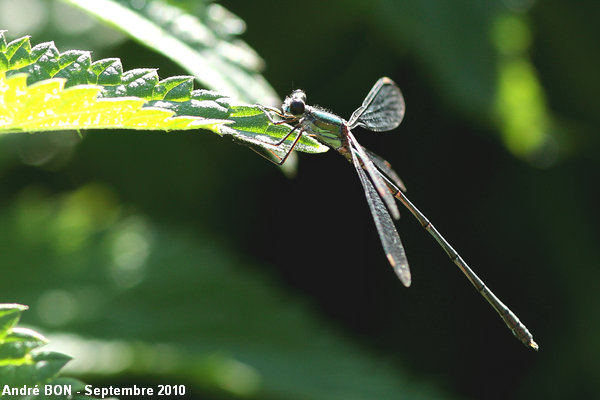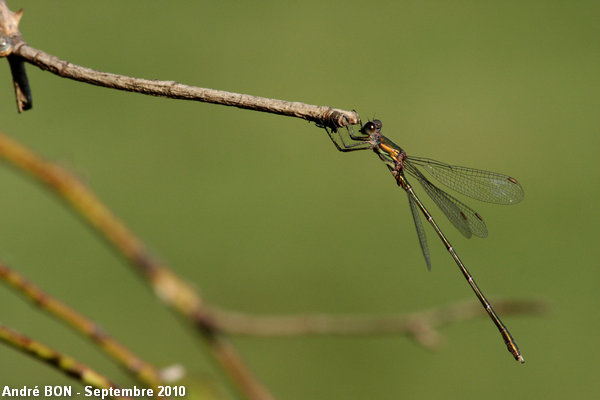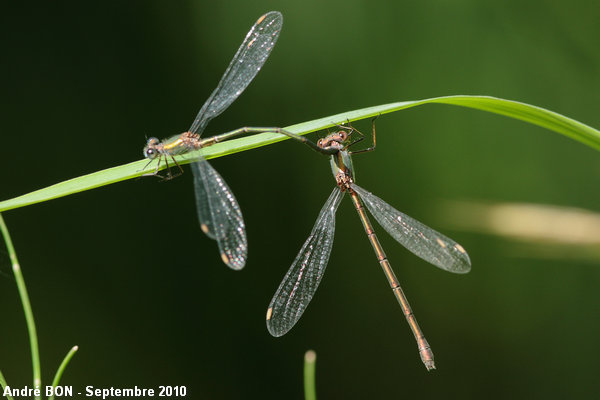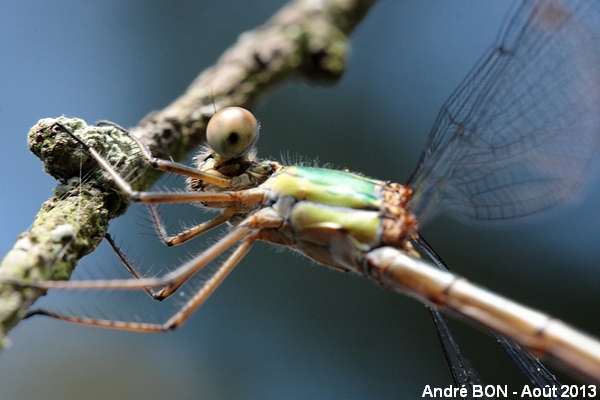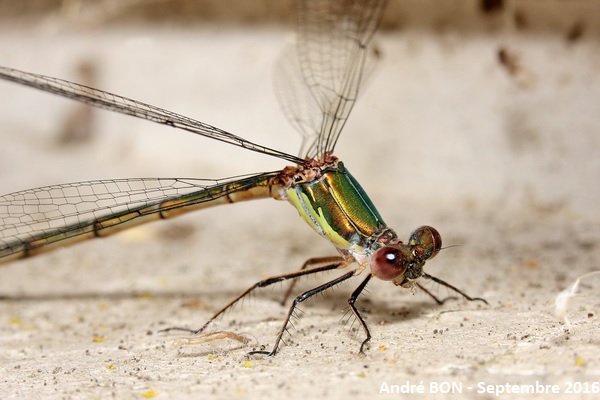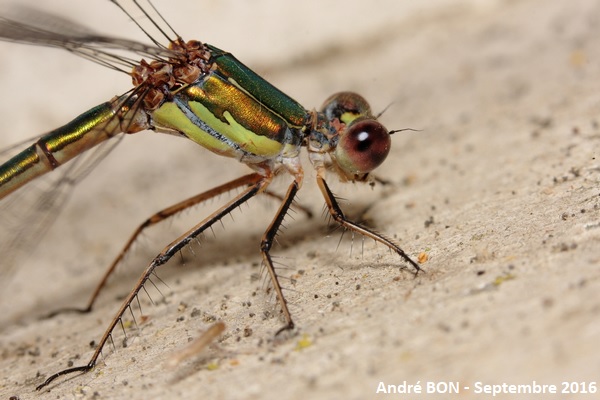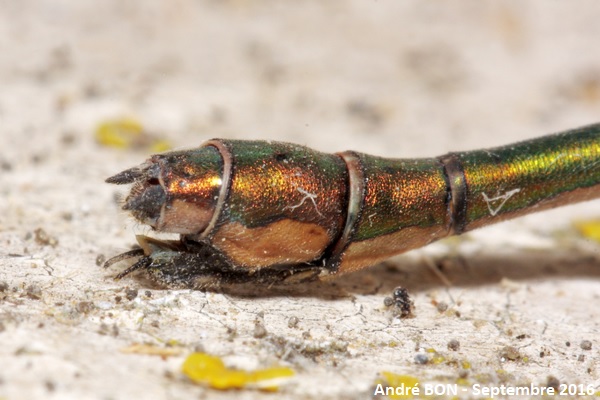Scientific name: Lestes viridis (Vander Linden, 1825)
Common name: Willow Emerald Damselfly
Other names: Western Willow Spreadwing. Other scientific name: Chalcolestes viridis (is this the new official scientific name?)
French name: Leste vert, Leste de cuivre.
Order: Odonata
Suborder: Zygoptera
Family: Lestidae
Wingspan: 50 to 60 mm.
Biotope: Various stagnant or slow running water zones having banks bordered with willows, alders or birches.
Geographic area: Southern and central Europe. North Africa. Replaced by the Eastern Willow Spreadwing (Lestes parvidens) in the eastern Mediterranean region (Croatia, Greece, etc.)
Flight time: Late August to early October.
|
The Willow Emerald Damselfly is a large damselfly with a green metallic colour. It is used to perching high on vegetation, holding its wings open.
Late summer, the colour changes with copper sheen.
You can tell it apart with the spur-like marking below the green lateral stripes on the thorax.
The pterostigmas are elongated, pale brown to pale beige and circled by black veins.
There is never any blue colour on the abdomen's tip.
The eggs are often laid in tandem. Females lay the eggs under the bark of trees whose branches grow over water. The eggs over winter. Late spring, larvae fall down into water. Their growth cycle, including 10 moults, will not last more than 3 months before emerging as imagos.
The Emerald Spreadwing (Lestes dryas) also shows a spur-like marking on the side of the thorax but it is a smaller size. You can distinguish it from the Willow Emerald Damselfly by the blue colour of the upper side of the second abdominal segment and by the dark pterostigmas.
The Eastern Willow Spreadwing (Lestes parvidens), east of the Mediterranean sea (Italy, Croatia, Greece, etc.), also shows a spur-like marking on the side of the thorax. The only way to tell it apart from the Willow Emerald Damselfly is to have a close look at the male's appendages (the black tip of the white cercoids does not extend on both sides like on the Willow Emerald Damselfly). The pterostigmas are a little darker than those of the Willow Emerald Damselfly. However the two species only fly together in the Italian Peninsula.
|




















